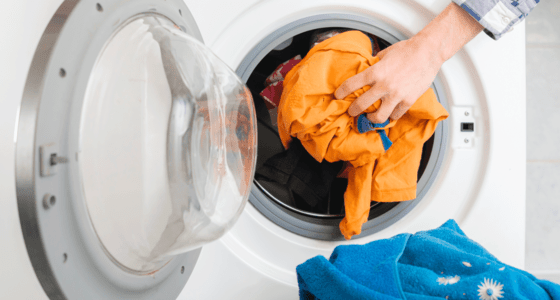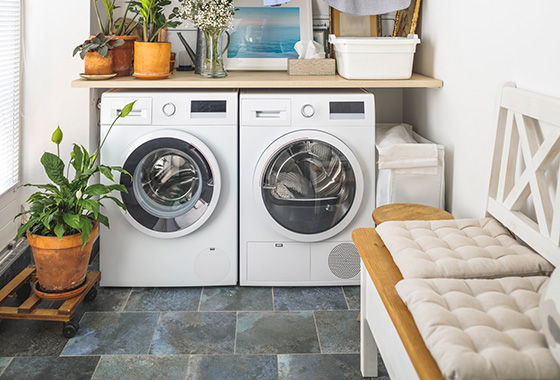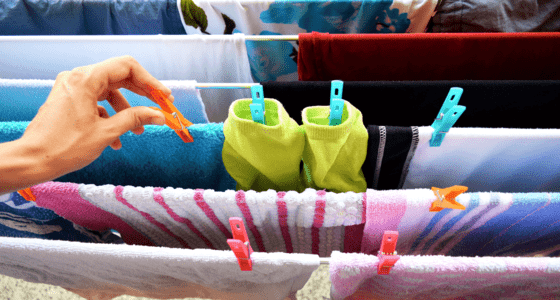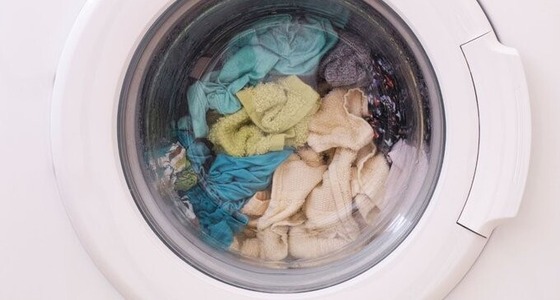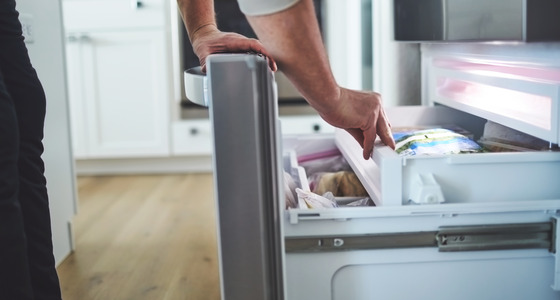Energy efficiency and your clothes dryer
A clothes dryer consumes more energy per use than any other appliance in the home – about 12% or more of the typical home's electricity costs – so it's important to use it efficiently and sparingly to help keep your energy costs down.
Tips for using your clothes dryer efficiently
Ways to keep your dryer running efficiently:
- Sort items by thickness. Dry light, quick-drying items in one load and thick items like towels or jeans in another.
- Avoid over-drying your clothes. Use the moisture sensor setting or, if using the “timed drying” function, experiment with the timing until you minimize the drying time needed.
- Dry full loads. Rather than many partial loads, combine your laundry so you can run fewer loads at the optimal load size to make the most of the energy used.
- Clean it regularly. Clean the lint trap after every load and vacuum out dryer vents regularly to increase air flow and reduce strain on the motor.
- Opt for reusable dryer balls instead of dryer sheets. Dryer balls reduce wrinkles and soften clothes, just like dryer sheets, but they last for years and they keep clothes from clumping together, which speeds drying time.
How to avoid overloading your dryer
Overloading your dryer will cause it to have to work harder. This means it will use more energy and can reduce the lifespan of the appliance. Aim for loads that fill the dryer drum to about half to three-quarters full, ensuring that clothes can move around freely.
Ways to tell if you've overloaded your dryer:
- Before you dry: If the drum doesn't turn when you press the start button, then you've definitely overloaded it.
- While you dry: An overloaded dryer will shake and strain (or squeak) while it's running.
- After you dry: If the lint tray is packed full of lint at the end of each use, then you know you're putting too much laundry in.
What to look for when purchasing a clothes dryer
The ENERGY STAR® label
ENERGY STAR-certified models have been tested to meet the highest standards for energy efficiency and reliability. They use about 20% less energy than standard models.
A moisture sensor
A dryer equipped with a moisture sensor will automatically turn off when clothes are dry. This helps to avoid wasted energy and damage to clothes.
An extra low temperature setting
While it may take a bit longer for a load to dry, drying clothes at extra low temperatures helps to save energy and reduces the likelihood of shrinking the fabric.
Heat pump dryers
If you're looking to replace your dryer, consider a heat pump dryer. This type of dryer transfers ambient heat from your home through a condenser and into the dryer to heat and dry your wet clothes. The hot damp air from your laundry is then fed through an evaporator which collects and removes the moisture. The resulting hot dry air is then fed back into the dryer and the process is repeated.
This means you won’t get all that hot, damp air that comes out of a conventional dryer's vent.
While heat pump dryers cost more than a standard dryer, EnergyStar.gov claims they only use half as much energy, which can add up to some significant savings.
Hang dry if you can
A great way to save on drying costs is to hang dry your laundry whenever possible instead of using the dryer.
